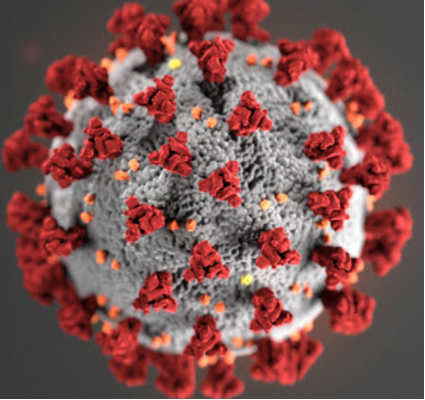Animal Models and Testing Services for COVID-19 Research
2019-nCoV is a novel pathogen emerged at the end of 2019. On February 11, 2020, the World Health Organization (WHO) officially named the disease caused by 2019-nCoV as Coronavirus Disease 2019 (COVID-19). Patients with COVID-19 pneumonia presented with the symptoms of fever, chest tightness, and fatigue. A small number of the patients have severe acute respiratory syndrome, renal failure and even death. So far, there is still no effective treatment to combat this infection.
In addition, it has been reported that ACE2 receptors serve as binding sites for COVID-19 in the lungs. Creative Bioarray offers you several animal models to help you with pathogenesis studies, development of vaccines, and evaluating therapeutics for COVID-19. All animal testing associated with COVID-19 research will be performed in the Biosafety Level 3 (BSL3) facility.

Available Animal Models
- ACE2 Humanized Mice
- Nonhuman Primates
- Other Species Are Also Available on Request
With the emergence of COVID-19, Creative Bioarray is ready for the challenge and to provide our customers with the best solutions so that they can complete their project smoothly. All employees of Creative Bioarray are ready to fight against COVID-19.
Animal Testing Services of Anti-SARS-CoV-2 Drug Development
- Weight measurement: Daily monitor body weight changes before and after infection
- Total tissue RNA extraction and RT-qPCR analysis: Quantification of viral road in different tissues
- ELISA: Quantification of specific IgG against SARS-CoV-2
- H.E. Stain/PAS Stain/Immunohistochemistry: Histopathological changes (for inflammation, tissue integrity and fibrosis) in multiple organs can be observed, e.g. lung, intestine, liver, kidney, spleen, brain, heart, etc.
Customized Research Design Service
Please contact us for more details and let us know your research interests. Creative Bioarray offer animal models that are well-suited for testing drug candidates in early antiviral therapeutic discovery, giving your confidence about your results. Customized service is available to meet your every scientific need.
- Different administration routes, including intraperitoneal, intranasal, intravenous, intramuscular, intragastric, subcutaneous, etc.
- Different endpoints
- Multiple doses and timepoints
- Prophylactic effect (virus pro-inoculation) and/or therapeutic effect (virus post-inoculation)
Quotation and ordering
If you have any special needs or questions regarding our services, please feel free to contact us. We look forward to cooperating with you in the future.
References
- Martinez M A. Compounds with therapeutic potential against novel respiratory 2019 coronavirus[J]. Antimicrobial Agents and Chemotherapy, 2020.
- Wan Y, Shang J, Graham R, et al. Receptor recognition by novel coronavirus from Wuhan: An analysis based on decade-long structural studies of SARS[J]. Journal of virology, 2020.
- Guo Y R, Cao Q D, Hong Z S, et al. The origin, transmission and clinical therapies on coronavirus disease 2019 (COVID-19) outbreak–an update on the status[J]. Military Medical Research, 2020, 7(1): 1-10.
For research use only. Not for any other purpose.
Disease Models
- Oncology Models
-
Inflammation & Autoimmune Disease Models
- Rheumatoid Arthritis Models
- Glomerulonephritis Models
- Multiple Sclerosis (MS) Models
- Ocular Inflammation Models
- Sjögren's Syndrome Model
- LPS-induced Acute Lung Injury Model
- Peritonitis Models
- Passive Cutaneous Anaphylaxis Model
- Delayed-Type Hypersensitivity (DTH) Models
- Inflammatory Bowel Disease Models
- Systemic Lupus Erythematosus Animal Models
- Oral Mucositis Model
- Asthma Model
- Sepsis Model
- Psoriasis Model
- Atopic Dermatitis (AD) Model
- Scleroderma Model
- Gouty Arthritis Model
- Carrageenan-Induced Air Pouch Synovitis Model
- Carrageenan-Induced Paw Edema Model
- Experimental Autoimmune Myasthenia Gravis (EAMG) Model
- Graft-versus-host Disease (GvHD) Models
-
Cardiovascular Disease Models
- Surgical Models
- Animal Models of Hypertension
- Venous Thrombosis Model
- Atherosclerosis model
- Cardiac Arrhythmia Model
- Hyperlipoidemia Model
- Doxorubicin-induced Heart Failure Model
- Isoproterenol-induced Heart Failure Model
- Arterial Thrombosis Model
- Pulmonary Arterial Hypertension (PAH) Models
- Heart Failure with Preserved Ejection Fraction (HFpEF) Model
-
Neurological Disease Models
- Alzheimer's Disease Modeling and Assays
- Seizure Models
- Parkinson's Disease Models
- Ischemic Stroke Models
- Acute Spinal Cord Injury (ASCI) Model
- Traumatic Brain Injury (TBI) Model
- Hypoxic-Ischemic Encephalopathy (HIE) Model
- Tourette Syndrome (TS) Model
- Amyotrophic Lateral Sclerosis (ALS) Model
- Huntington's Disease (HD) Model
- Intracerebral hemorrhage (ICH) Models
- Schizophrenia Model
- Pain Models
-
Metabolic Disease Models
- Type 1 Diabetes Mellitus Model
- Type 2 Diabetes Mellitus Model
- Animal Model of Hyperuricemia
-
Nonalcoholic Fatty Liver Disease Model
- High-Fat Diet-Induced Nonalcoholic Fatty Liver Disease (NAFLD) Model
- Methionine and Choline Deficient (MCD) Diet-Induced Nonalcoholic Fatty Liver Disease (NAFLD) Model
- Gubra-Amylin NASH (GAN) Diet-Induced Nonalcoholic Fatty Liver Disease (NAFLD) Model
- Streptozotocin (STZ) Induced Nonalcoholic Fatty Liver Disease (NAFLD) Model
- High Fat Diet-Induced Obesity Model
- Diabetic Foot Ulcer (DFU) Model
- Liver Disease Models
- Rare Disease Models
- Respiratory Disease Models
- Digestive Disease Models
-
Urology Disease Models
- Cisplatin-induced Nephrotoxicity Model
- Unilateral Ureteral Obstruction Model
- 5/6 Nephrectomy Model
- Renal Ischemia-Reperfusion Injury (RIRI) Model
- Diabetic Nephropathy (DN) Models
- Passive Heymann Nephritis (PHN) Model
- Adenine-Induced Chronic Kidney Disease (CKD) Model
- Kidney Stone Model
- Doxorubicin-Induced Nephropathy Model
- Orthotopic Kidney Transplantation Model
- Orthopedic Disease Models
- Ocular Disease Models
- Skin Disease Models
- Infectious Disease Models
- Otology Disease Models